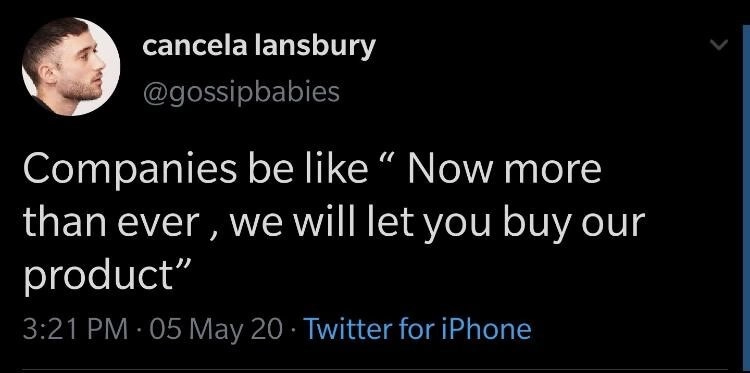
Introduction
Should your B2B Lead Generation Strategy remain the same in the time of COVID-19 and beyond? The short answer is no. The world has changed significantly and your marketing should adapt with it. In times of economic uncertainty, customers are reluctant to purchase and this puts more pressure on marketers and sales teams.
As in all aspects of life, our success is dependent on how we respond to this pressure. We need to pivot and spring to action faster than ever before. It’s time to reassess what your budget looks like, where you should invest, and how your programs should react to shifting channels and demand goals.
Let’s look at some ways in which you can adapt and reinvent your marketing over the short, medium and long term.
Short Term – The Basics
Your Messaging And Offer
- For now, the hard sell is dead. Focus on communicating value and showing how your product or service can help. Be genuine and authentic and if you can’t think of ways to be helpful, entertain. Stay top of mind and don’t stop brand building
- Rethink your offer. How can you offer lower-cost versions of your product or service, or how can you add guarantees or liability-free demo or trials? This is the time to reduce friction as much as you can
- Re-evaluate your automation strategy. In an environment where we’re cautioned to be more deliberate in our messaging and outreach, you should pause and reassess your marketing automation to make sure that it still fits
All of this needs to work together. Don’t just follow the next best trend, tweet or email stating, “We are here for you in this time of crisis” without changing your offer, providing real assistance, helpful content or creating alternatives that speak to your prospects’ changed circumstances. Your response cannot be more of the same thing wrapped in false sincerity.

Your Existing Relationships
- Take extra care with your existing customer relationships. Find new ways to help them. If you can’t help, then show them your appreciation. This is where you focus on building strong relationships with high lifetime value. These relationships are the foundation of your business and it’s critical to nurture them in challenging times.
- Ask for referrals. Your best marketing opportunities lie with your existing client base. Now is the time to engage with them and ask them to chat to their network about the positive experiences they’ve had with your company.
Medium-Term
You should now be armed with a revised offer as well as messaging that is educational, helpful and clearly communicates the value of your offer. The next step is to make sure that you’re making the most of the channels that are available to you.
What are the best B2B Lead channels? Well, if we go by the HubSpot study we find that these are the key channels:

Source: HubSpot Blog
It’s likely that pre-COVID-19, you already had a solid game plan in place for the above-mentioned lead sources. If you didn’t, well, there are loads of articles, videos, whitepapers, eBooks, mastermind groups and courses out there that cover each of them in great depth.
The key is to identify which of your channels are the most efficient and effective for lead generation, cut the channels that are not yielding results and use your new messaging and offer strategy on the remaining channels. Less is more, especially in our current circumstances. Go through your strategy channel by channel and optimize the channels you decide to keep based on your data.
Events
One channel that deserves a special mention here is live events. With live events cancelled in the short term, we’ve seen a phenomenal rise in virtual events (especially webinars) as marketers scramble to plug an essential hole in their marketing mix.
Although webinars and other virtual event formats are substitutes for real-world events, keep in mind that the digital formats have their own strengths and weaknesses. You shouldn’t just copy and paste your live event strategy into a digital format. Take advantage of the format’s strengths:
- Content Longevity. Your content has a longer lifespan in this format. Think about repackaging your content after the event into shorter snippets and shared to your base via email or social.
- Your potential attendee pool is far greater than with a physical event (they could literally come from anywhere in the world). This means that your attendee acquisition costs should be lower and the potential exists to tailor your content to a hyper-niche audience that would normally not be possible to bring together in one location.
- Rich data and analytics. Virtual event platforms give us the ability to measure attendee engagement and interest in real time. Armed with this data, you can learn from the performance of what has come before and improve upon it for the next one.
With so much noise and too many webinars to attend, your next virtual event could probably use a bit of help to stand out. You can use this handy guide to help fine-tune your next webinar’s positioning, targeting, conversion and performance.
Long-Term: Focus on Building Sustained Value
With the basics in place and your channel strategy revised, you should have the breathing space to start thinking about how you can build lead generation infrastructure that can withstand the next shock and help you grow and thrive.
Here are the two keys to lead generation that are often overlooked, yet crucial to your marketing mix:
- Online Communities
- CRO
Online Communities
Why Online communities?
Online B2B Communities have a lot going for them. They offer tangible value in a variety of ways:
- Brand Building and Thought Leadership
- A platform for Social Selling
- A content marketing distribution channel
- A source of Target Market Insights
- Event Marketing
- A GDPR compliant channel for outbound communications
If you’re wondering what the secret is to a thriving online community, the answer is nuance and restraint. Although communities create powerful brand-building opportunities and stakeholder touchpoints, they are most likely to succeed when built around the target audience, and not around your brand itself. Understand that people don’t like being sold to but will always flock to what they’re interested in.
Capture people’s passions and tie your brand into that, and you’re onto a golden ticket. However, remember to focus on providing value and building trust first, before you try to monetise these relationships.
Conversion Rate Optimization (CRO)
Most marketers overlook Conversion Rate Optimization because it’s a less glamorous, far more technical, through-the-funnel tactic. But most marketers are wrong. CRO is the one tactic that can add the most value to your overall marketing strategy without making changes to anything else.
Conversion Rate Optimization is all about taking a data-driven approach to increase conversions from your existing traffic. It can be argued that you should focus on CRO before focusing on anything else. This is because if you’re driving a lot of traffic already, but not converting a sizable amount of that traffic, then your funnel is leaking and you need to plug the leaks before pouring more and more traffic into the funnel.
CRO is all about small optimizations that stack up into big, compounded results, with the aim to build the most optimized marketing process possible. This simple table below illustrates the dollar value that a 0.5% change in conversion can have on existing traffic:
| Traffic | 150000 | 150000 |
| Average Conversion value | $300 | $300 |
| Conversion % | 1.5% | 2% |
| Conversions in dollar | $675,000 | $900,000 |
| Revenue Gain | $225,000 | |
| Revenue Gain % | 33.3% |
The math makes CRO seem like a no-brainer. So why aren’t more businesses focusing on CRO?
Long Term Investment With Short Term Risk
CRO is inherently a process of testing and learning. This means that sometimes the tests could render worse results in the short term. A conversion-focused culture requires the organisation to be comfortable with testing, failing and learning in the pursuit of success. It starts with a hypothesis and although the process is data-driven, errors can and will be made. This is often a tough sell to managers and other stakeholders who are risk-averse and focused on the next quarter’s earnings.
That said, armed with the facts and your own data as set out in the table above, you should be able to make a convincing argument for the investment based on the impact of CRO on your company’s bottom line. They say that CRO speaks the language of the CFO, and once you can showcase the ROI it becomes difficult to deny its value.
Summary
Ultimately, when responding to a crisis or times of upheaval, whether it’s the current COVID-19 pandemic or the next financial crisis, the essentials of your playbook can be broken down to these core ideas:
- Make sure you have the basics in place and that you are getting them right. You are not going to build a transformational marketing strategy on a shaky foundation
- Adapt your tone, messaging and offer to the new reality – but don’t get melodramatic. People respond to authenticity
- Cut the channels, tactics and programs that aren’t working and double down on those that do
- Invest in strategies and programs that deliver sustained, long-term value. These strategies are, but in no way limited to, building online communities and upping your CRO game
These are some general ideas that can help substantially, but understand and accept that there are no silver bullets. There are no magical levers to pull that can make the situation go away. This is the time to roll up your sleeves and get to work. Mix in a heavy dose of grit and optimism in your execution of these ideas. No matter how bleak the situation, it is always worthwhile to keep a realistic and hopeful frame of mind. Don’t just think about surviving, but think about how you can grow and thrive by taking advantage of the opportunities that the changing world brings to the fore.
There are always new opportunities, and every down has an up. It’s up to us to keep our eyes open and focused on the silver linings.
Our blog
Latest blog posts
Tool and strategies modern teams need to help their companies grow.

B2B companies must generate leads that are ready to buy their products in order to me...

In the absence of a constant flow of leads, sales teams can't meet their targets and ...

Podcasts and webinars are powerful tools that marketers can use to reach new audience...




